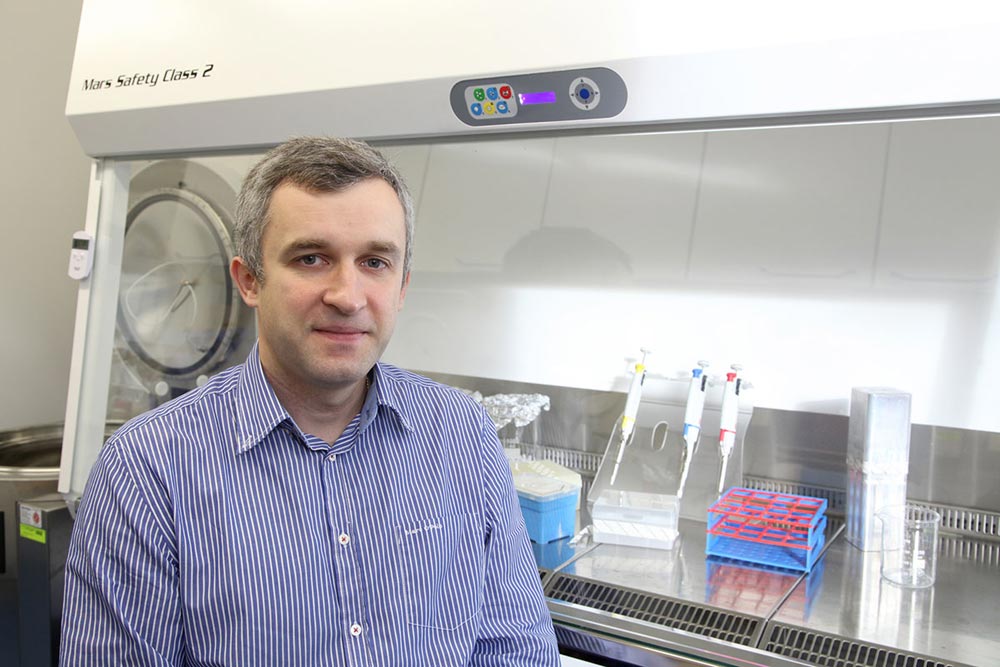

Prof. Dr. Andriy Mokhir, Chair of Organic Chemistry (Image: FAU/Georg Pöhlein)
Reactive oxygen species (ROS), more commonly known as oxygen radicals, are both a blessing and a curse: in a healthy organism they regulate cell growth, modulate inflammatory processes and help to capture and eliminate pathogens.
In high concentrations, however, ROS damage tissue, cause uncontrolled inflammation and are involved in triggering cancer and autoimmune diseases.
Paradoxically, however, amplifying oxygen radicals can indeed lead to a cure. In order to benefit from this effect in clinical applications, an innovative new medicine is being developed at FAU.
It deliberately increases the concentration of ROS in neutrophils, special cells in the congenital immune system. This can resolve inflammation or boost blood formation, thereby combating the destruction of stem cells in the bone marrow.
The project is being coordinated by Prof. Dr. Andriy Mokhir (Chair of Organic Chemistry II). Department of Medicine 3 – Rheumatology and Immunology at Universitätsklinikum Erlangen (PD Dr. Markus Hoffmann, Prof. Dr. Martin Herrmann and Prof. Dr. Georg Schett) and research institutions in Great Britain, France, Sweden, Spain and the Ukraine are also involved.
A detailed project description from the EU is available from the Cordis research platform.
Further information:
Prof. Dr. Andriy Mokhir
Phone: + 49 9131 85 65582
andriy.mokhir@fau.de















